What’s Best For Your Horse’s Teeth?
Dr Akruti Choksi, a horse dentist who changed her profession for her love for horses, shares with LA POLO a set of dental tips that must be taken care of when it comes to your loyal companion.

Horses are considered to be one of the most loyal animals that will fill you with unconditional love. But maintaining a horse can be a major task in itself. From its growing up ages to the day it goes on the field to conquer the games, a lot of to and fro is involved, While most of us with proper stability take care of the exercise and fitness of the horse, what we mostly overlook is the dental care and hygiene. Talking about the same, we had on board with us horse dental expert, Dr. Akruti Choksi. She shared with LA POLO, a set of 20 tips that must be taken care of to maintain good oral hygiene for the horses.
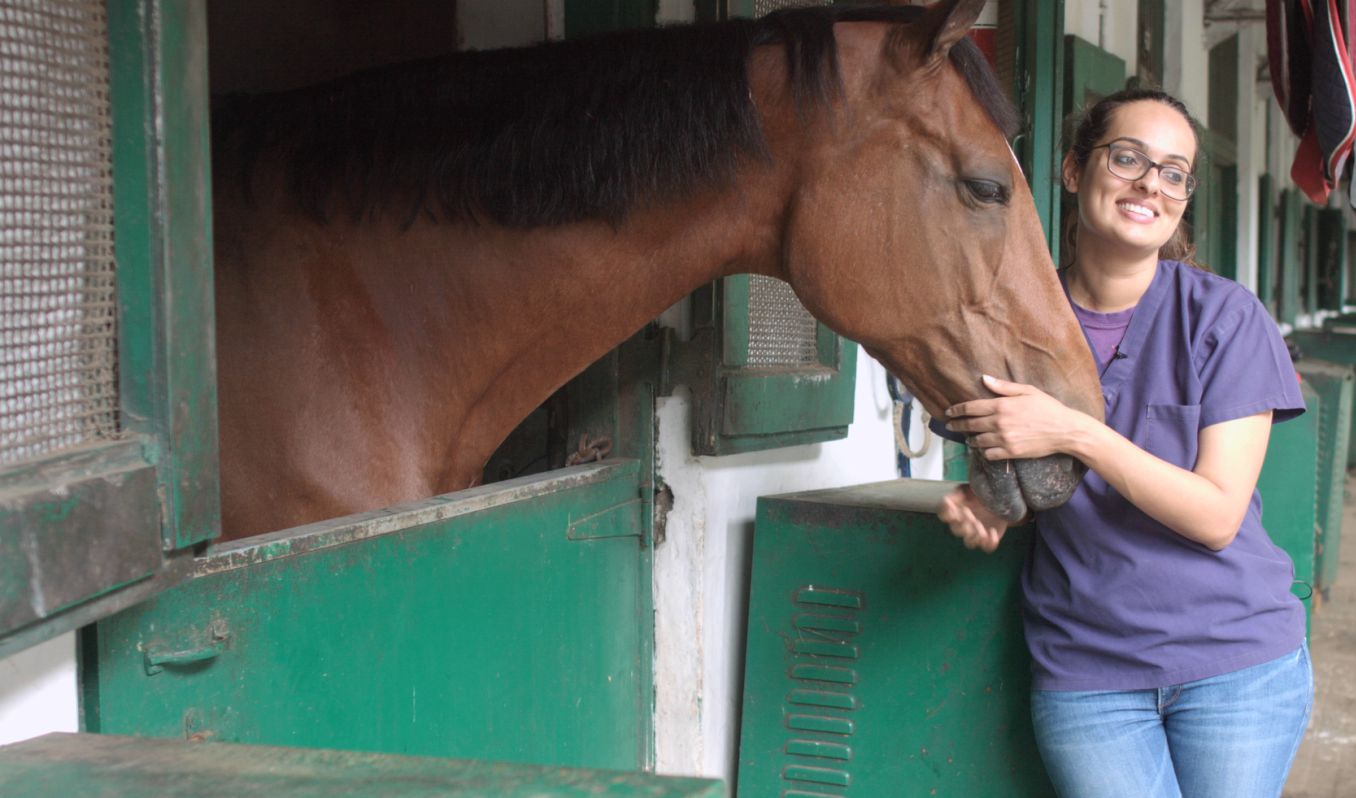 Dr Akruti Choksi, horse dental expert
Dr Akruti Choksi, horse dental expert
1.Grazing
Grazing lets horses move around naturally outdoors and socialize with other horses. And grass is an easily available, nutritious feed that horses like eating. Ideally horses should be allowed 7 hours of grazing a day or more. Horses on pasture have been documented to have a lower incidence of colic and behavioral vices. Grazing helps in the natural wear and tear of the teeth and also helps in the correct aging of the horse.
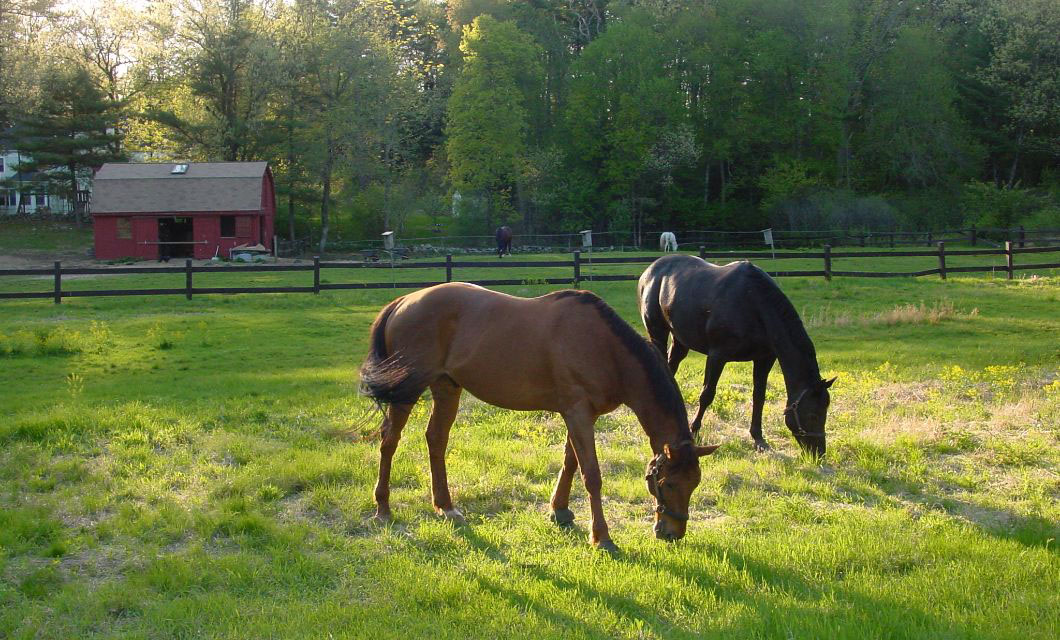 Equine Ink
Equine Ink
2.Starting Dentistry
The best time to start dentistry for your horse is at 2years and 8 months.
This is approximately the time that their first milk teeth( caps) are ready to shed. Also this is the time they start training with the bite, hence it is advisable to remove wolf teeth and do conservative rasping of teeth. This will help prevent bad habits while training.
3. What are the common signs and symptoms of dental problems?
•Throwing of head
•Acting up under saddle
•Unusual head movements
•Tilting of head while eating or riding
•Bit discomfort
•Unable to stay in frame when riding
•Dropping or losing grain
•Undigested food in manure
•Excessive saliva
•Soaking food in water
•Chewing food on only one side of the mouth
•Unexplained weight loss
•Eating slowly or showing excessive effort to eat
•Excessive weight gain.
•Quidding
•Packing food on the sides of the mouth
4.Teeth
A foal’s teeth will begin to erupt within a week of being born, and they should have a full set of primary teeth by six months.
Horses have two sets of teeth, one temporary and one permanent. Temporary teeth may also be called "baby" or "milk teeth." Temporary incisors tend to erupt in pairs at 8 days, 8 weeks, and 8 months of age. A well-grown 2-year-old may be mistaken for an older horse unless permanent teeth can be accurately identified.
Young horses have a total 24 deciduous or milk teeth - 12 incisors and 12 premolars or molars.
5.Canines
Canine teeth in horses: all you need to know. Canine teeth are usually absent or less developed in female horses, but erupt in most male horses by the time they are between four-and-a-half and five years old. The lower canines sit behind the corner incisors, and are generally further forward than those in the upper jaw .
Originally “fighting teeth”, they have no occlusal contact, i.e. the opposing upper and lower canines do not meet, so they are of no benefit in the eating process.
They could be shortened and buffed during dental work after the age of 6 yrs. They often tend to have calculus or hard tartar build up around them. They must be cleaned routinely to avoid periodontal disease.
Canines are not to be mistaken for wolf teeth.
6.Caps
From the first to fourth years of the life of a horse, the permanent teeth begin to grow in, but in order for them to grow normally, the deciduous teeth (babyteeth)must shed. Deciduous teeth that have not been lost and sit on top of the permanent teeth are called caps.
The first set of caps are ready to shed approximately at 2years and 8 months. These can sometimes cause discomfort when the bit comes in contact with them. This causes various problems such as the horse will be shy of the bit, unable to turn on either side, develop cuts in the mouth or tongue, behavioural issues etc.
Caps are fully shed around the age of 4 years. Hence we recommend younger horses to have routine dental checks within 3 to 6 months. This helps in maintaining optimal health, good performance and training.
7.Wolf teeth
Wolf teeth are small, peg-like horse teeth, which sit just in front of (or rostral to) the first cheek teeth of horses and other equids. They are vestigial first premolars and the first cheek tooth is referred to as the second premolar even when wolf teeth are not present.
Wolf teeth are usually present on the upper jaw (maxilla),but sometimes are also present on the lower jaw (mandible) Since they are in the place where the bit sits in the mouth, I recommend they be extracted as soon as horses start training. This avoids injuries to the mouth and also helps horses to focus on their performance.
Wolf teeth serve no purpose in chewing or defence. When they are not extracted, they often break (fracture) or become loose due to the pressure from the bit. This causes severe pain to the horse.
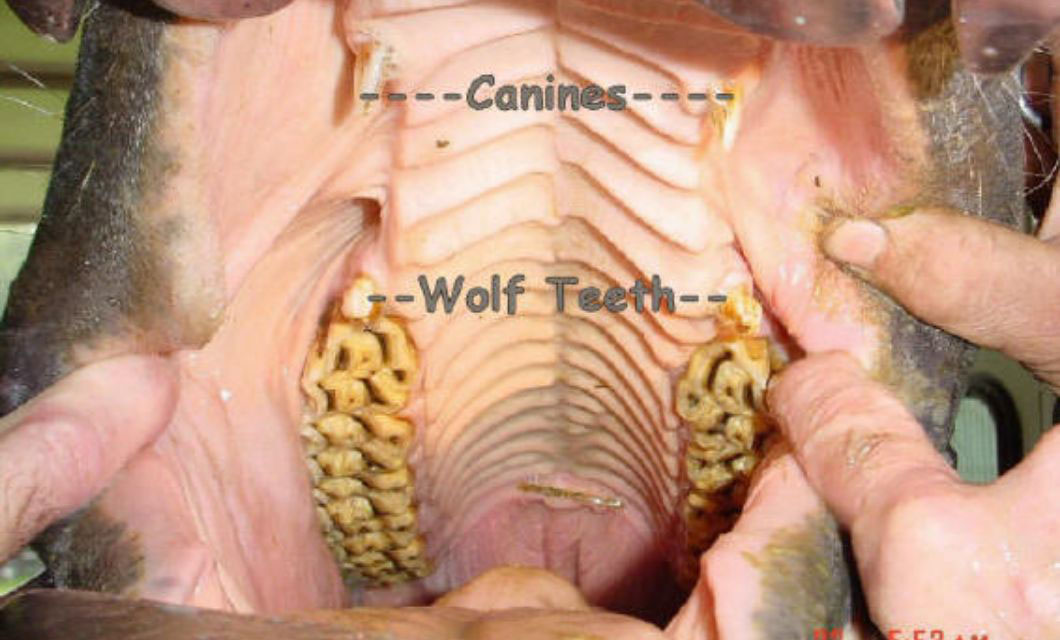 The Equine Report
The Equine Report
8. Hooks
Hooks develop due to the misalignment of the molar arcades. A hook is a conical or pointed overgrown part of the tooth. Hooks commonly occur on corner incisors, the first cheek tooth or the last molars. Hooks cause discomfort when they come in contact with the bit, causing bad behaviour. Hooks also block the normal chewing pattern of the horse causing loss of condition.
Hooks are commonly seen in parrot mouth or monkey mouth horses. Regular dental work on incisors as well as cheek teeth is required for horses that have a tendency to have hooks.
9. Ramps
Ramped cheek teeth are similar to hooks but have a more gradual slope to the tooth and can also be on the front or back, upper or lower cheek teeth. They typically are on premolars with a surface that slopes like a ski jump. Ramps can cut, pinch or scrape the tongue or cheek, especially when a horse is bitted.
Regular dental work is required on horses to avoid formation of ramps. It is very important to bitseat in such cases to avoid damage to the soft tissues.
10. Bit Seats
Bit seats is the term commonly known as the rolling of the second upper and lower premolars from the gumline to the chewing surface. This roll back gives relief from the teeth contacting the metal bit and damaging the teeth and causing pain in the horse's mouth.
However one must be careful about overzealous reduction during bitseating. The age and anatomical knowledge of the pulp horns are crucial while bitseating a particular horse.
11.Wry Nose
Wry nose is a deviation of the rostral maxilla, meaning that the upper jaw and nose are deviated to one side. Wry nose is most obvious in species with long faces, such as horses and cattle. It is a congenital abnormality, meaning that it is present at birth
The cause of wry nose in horses is unknown; it may have a genetic cause, or be due to malpositioning in the uterus.A wry nose may cause difficulty during foaling. A foal with wry nose may have poor alignment (malocclusion) of the teeth,although foals can usually still nurse and in most cases are bright and active.Affected horses may have difficulty prehending food (taking food up into their mouth) and difficulty chewing food, which can lead to uneven wearing of the cheek teeth.Other deformities may be present, such as neck deformities, or, occasionally, limb deformities. Wry nose horses are good for athletic endeavors after surgical correction.
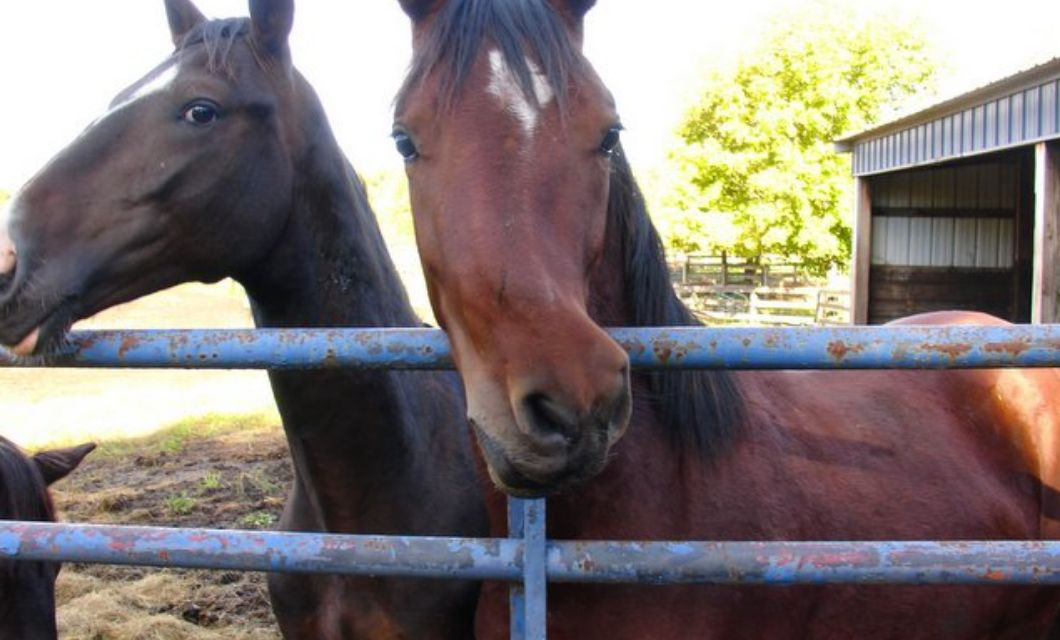 Horse Nation
Horse Nation
12 .Cribbing
Stereotypies are repetitive, unwavering behaviours that cease to obtain a goal and lack function. One of the most common stereotypies in horses is equine oral stereotypic behaviour, otherwise known as cribbing, wind sucking or crib-biting.
Cribbing or crib biting involves a horse grasping a solid object such as the stall door or fence rail with its incisor teeth, then arching its neck, and contracting the lower neck muscles to retract the larynx. This coincides with an in-rush of air into the oesophagus producing the characteristic cribbing grunt.
While cribbing has traditionally been thought to be just a vice or bad habit, new information indicates that a horse that cribs may be responding to a digestive upset. Cribbingcan also be caused by extreme boredom and is usually associated with horses who spend most of their time in stall situations. Cribbing causes excessive attrition, or wearing,of incisors.
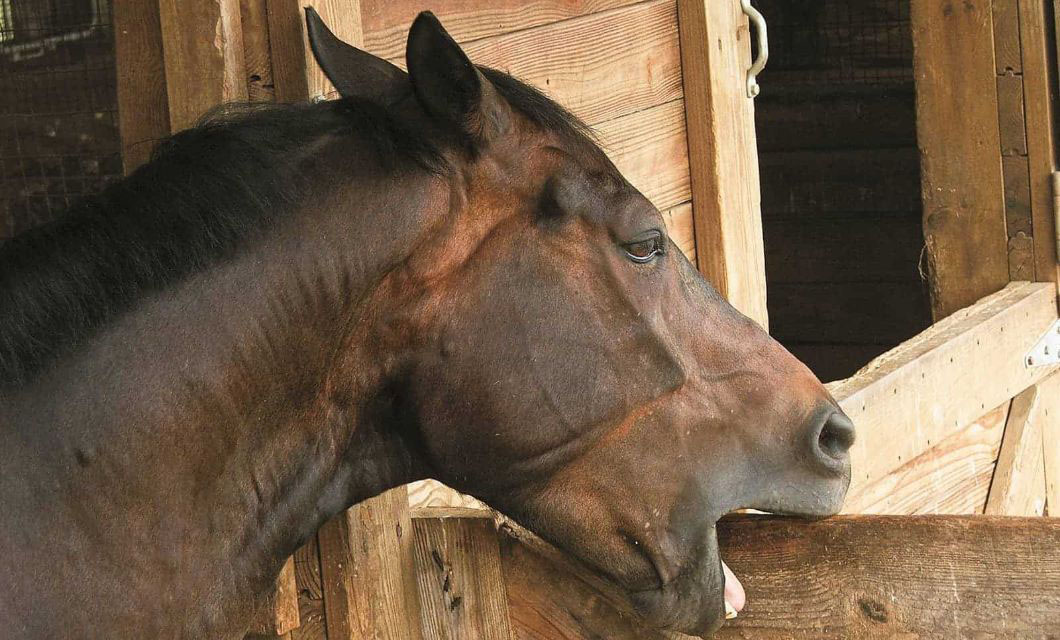 The Horse
The Horse
13. Parrot mouth
The parrot mouth condition is caused when the upper and lower jaw of a foal do not grow at the same rate. When a horse's top incisor teeth protrude over the incisor teeth on its lower jaw, the condition is called parrot mouth, buck teeth or undershot jaw.
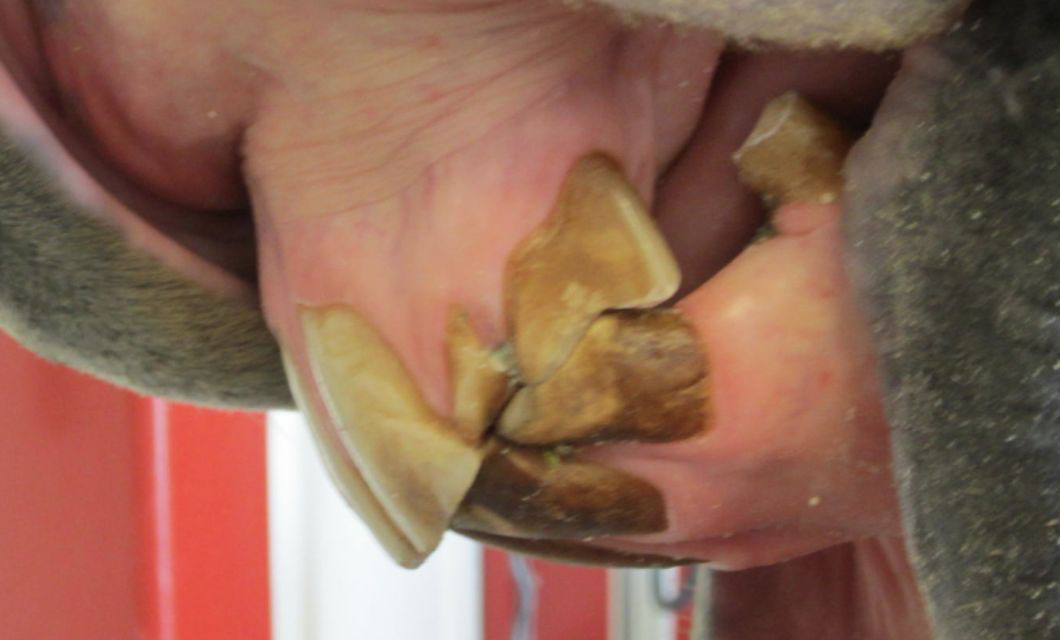 Horse Idevet Guide
Horse Idevet Guide
14. Quidding
Quidding is a response to mouth pain in which the horse loses or spits balls of semi-chewed food stuff out of their mouth. The most common cause of quidding is teeth that are uneven or that have sharp points. This does not allow the mouth to close properly and makes chewing extremely difficult.
The symptoms can consist of:
•Upper teeth hanging over bottom teeth
•Bottom and top jaws do not match up
•Upper and lower teeth do not meet
•Uneven wearing of the teeth
•Sharp teeth
•Cuts or other damage to mouth, gums, cheeks, and tongue Appetite loss
•Loss of weight
•Malnutrition
There are different theories on how parrot mouth is developed, which include:
•Breeding two horses with very different style heads Genetics •Illness or infection Injury
•Early diagnosis and timely dental work helps in reducing the gap between the jaws.
•In mild cases of parrot mouth, the treatment is to schedule your horse to see the veterinarian or equine dentist annually to monitor the progress. This is to make sure the condition is not getting worse and to even out the teeth if they are wearing down unevenly.
15. Horse Tongue
A horse tongue is a specialized working tool made up of a dozen muscles, which is used to pick up feed or nip off blades of grass. It plays a vital role in chewing,swallowing and keeping teeth clean.
Common injuries to the tongue could be caused by bits, harsh rein action or sharp teeth. Pulling the tongue to immobilize the head is a common practice. However, excessive pressure can cause permanent damage.
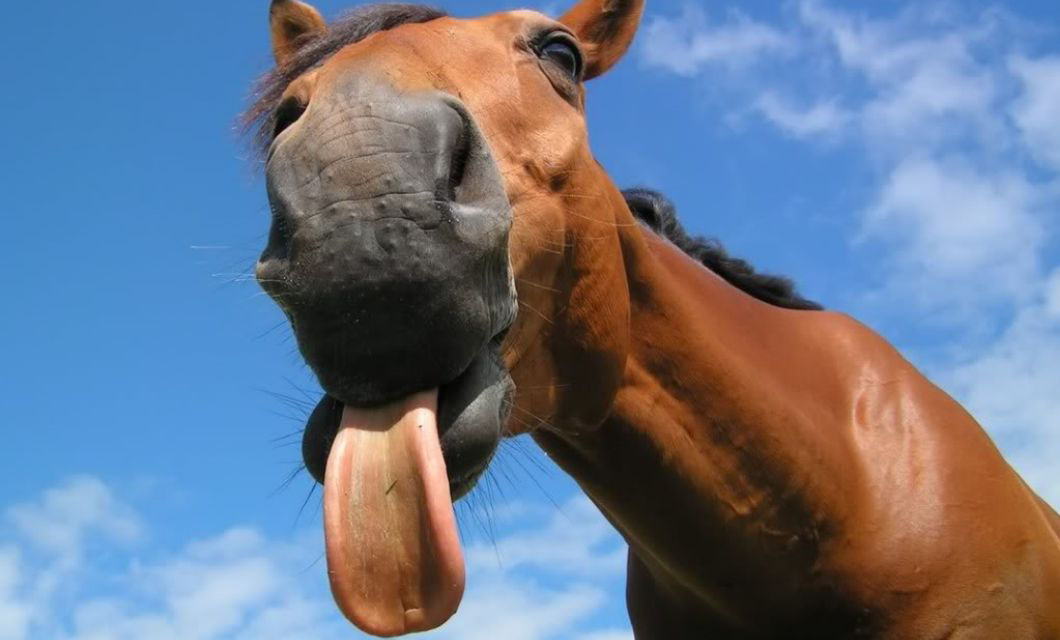 Animal Palooza
Animal Palooza
16. Horses lips
Horses have prehensile lips,meaning they can be used for grasping , seizing or taking hold of something. Lip twitching and trembling can be related or unrelated to eating. Some horses flap their lips loudly when they are nervous or anxious, or anticipating an undesirable event. Recognize that a variety of lip movements can be considered normal.
The Flehmen response is a biological response to smell. The curling back of the upper lip (and often pulling their head back at the same time) helps activate an organ that allows horses to sense chemicals in the air, particularly pheromones.
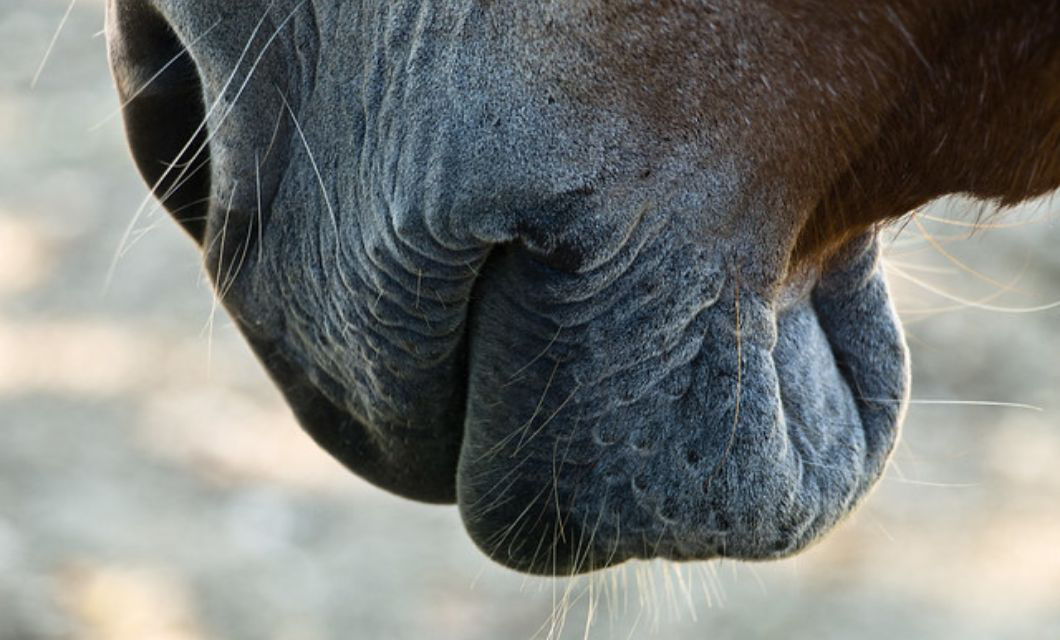 Flickr
Flickr
17. Whiskers
In the midst of the marshmallow-soft skin near the mouth are scattered, coarse hairs, called vibrissae, or tactile hairs. These whiskers are a result of millions of years of evolution to help horses sense their environment. As horses cant see directly in front of them, cutting those hairs can lead to injuries as a result of horses failing to avoid obstacles near their faces. Whiskers around the eyes have a good nerve supply and so pick up vibrations. When something touches the whiskers around the eyes, this elicits a blink response which protects horses' eyes.
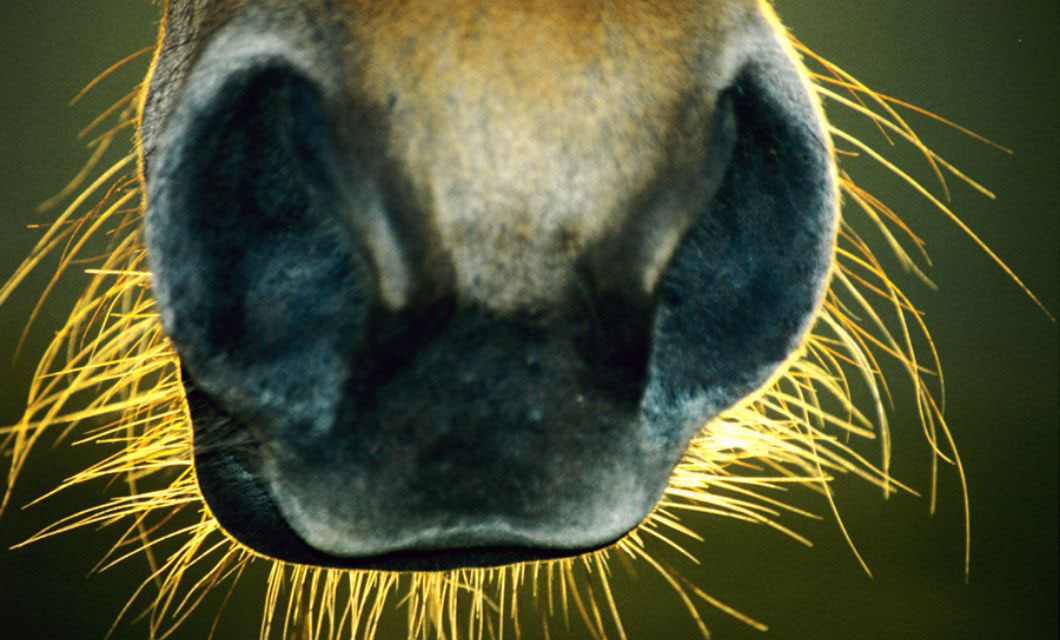 Schleese
Schleese
18. Power vs Hand tools
What is better for My horse?
Power float is a term used when the dental work is performed using motorized equipment. Hand tools are non motorized equipment. In my opinion for younger horses, without any advanced dental problems, hand tools work best. Hand tools are comfortable, efficient ,easy to use and not intimidating for the horse. They decrease the chances of over floating and overheating when used correctly.
In older horses power or hand tools are suitable as per the skill set of the dentist or vet. There are advanced or severe cases where it becomes necessary to use power tools to correct the malocclusion. I would say both are equally effective when used correctly.
19. Monkey mouth :
An underbite (monkey mouth, sow mouth, prognathism) is a deformity in which the lower incisors extend beyond the upper incisors. This causes ramps or hooks on the lower cheek teeth. It is important to get dental work done regularly as horses with monkey mouths could have problems with chewing and problems in performance. Dental work is required to keep the incisors and the cheek at the correct heights
20. Galvayne's Groove
Galvayne's Groove is a darkish groove that is present on the upper corner incisor teeth in horses between the ages of around 10 to 30 years.
Galvayne's groove can be an indicator of age in older horses. It appears first near the gum line at about 10 years of age. The groove extends halfway down the tooth at 15 years, and all the way down the tooth by 20 years. By approximately 25 years, Galvayne's groove is halfway gone, and by 30 years, it has disappeared completely.

